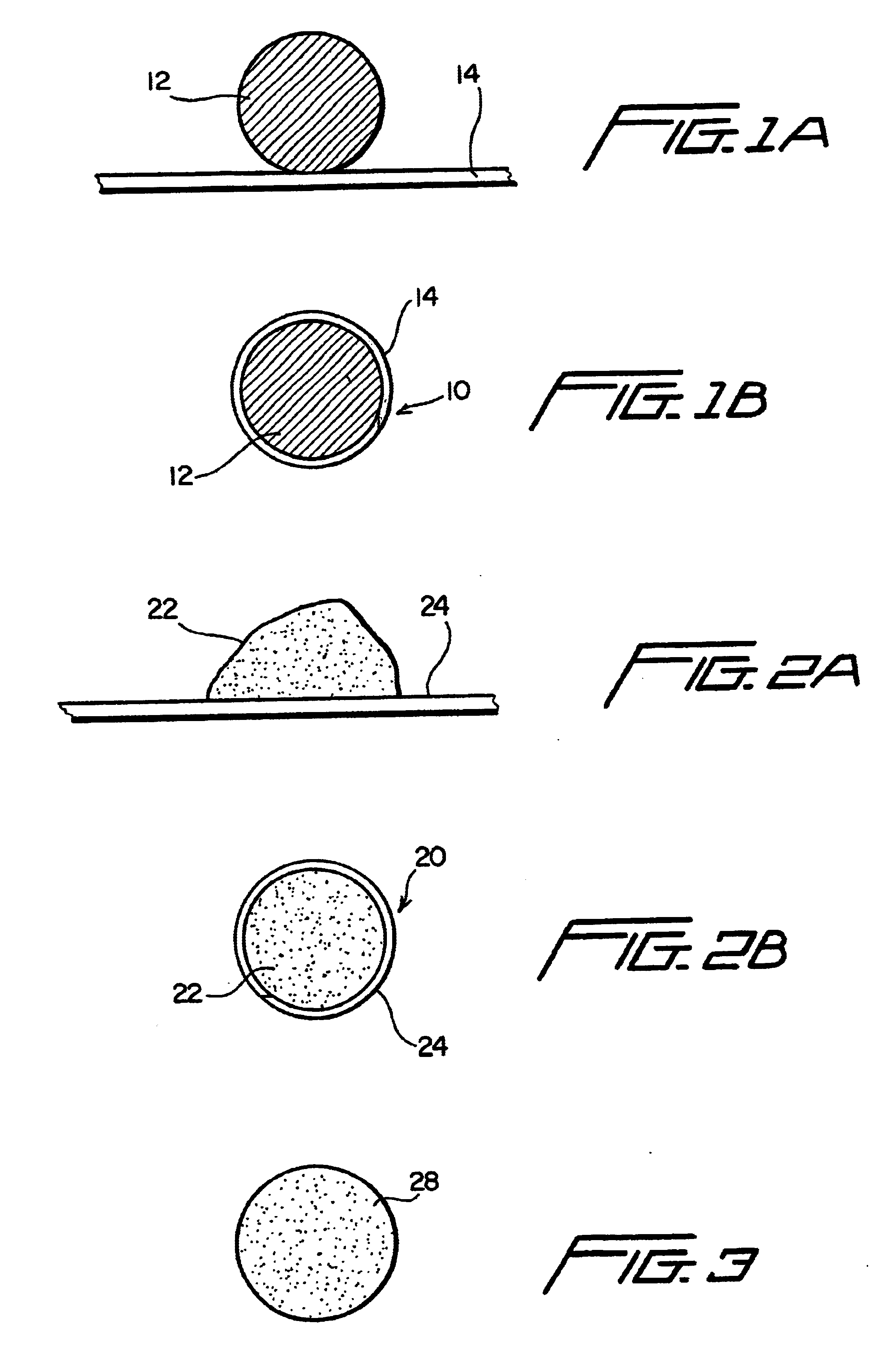Methods for using a laser beam to apply wear-reducing material to tool joints
a technology of laser beam and tool joint, which is applied in the direction of manufacturing tools, vacuum evaporation coating, coatings, etc., can solve the problems of cracking in the cladding deposit, and achieve the effect of reducing the temperature of the heat applied and extremely wear-resistant cladding
- Summary
- Abstract
- Description
- Claims
- Application Information
AI Technical Summary
Benefits of technology
Problems solved by technology
Method used
Image
Examples
Embodiment Construction
As shown in FIG. 1A, a solid wire 12 of copper, of copper alloy, or of a combination of copper and copper alloy is to be enclosed in an outer cladding or sheath 14 of aluminum, aluminum alloy, or a combination of the two. Any suitable known process for forming the resultant wire 10, FIG. 1B, may be used. In one aspect a known tube mill process is used to form a flat strip into a tube around a core, either powdered or solid.
In another aspect as shown in FIGS. 2A and 2B, an amount of powder 22 of copper, copper alloy, or both is used to form the core of a wire 20 that has an outer cladding or sheath 24 of aluminum, aluminum alloy, zinc, and / or zinc alloy. It is within the scope of this invention to feed core material powder and sheath material powder to a spray apparatus instead of feeding wire.
FIG. 3 shows a wire 28 according to the present invention which is formed by melting aluminum (and / or aluminum alloy), adding and melting copper (and / or copper alloy) to the aluminum melt, and ...
PUM
| Property | Measurement | Unit |
|---|---|---|
| thickness | aaaaa | aaaaa |
| velocities | aaaaa | aaaaa |
| thickness | aaaaa | aaaaa |
Abstract
Description
Claims
Application Information
 Login to View More
Login to View More - R&D
- Intellectual Property
- Life Sciences
- Materials
- Tech Scout
- Unparalleled Data Quality
- Higher Quality Content
- 60% Fewer Hallucinations
Browse by: Latest US Patents, China's latest patents, Technical Efficacy Thesaurus, Application Domain, Technology Topic, Popular Technical Reports.
© 2025 PatSnap. All rights reserved.Legal|Privacy policy|Modern Slavery Act Transparency Statement|Sitemap|About US| Contact US: help@patsnap.com



